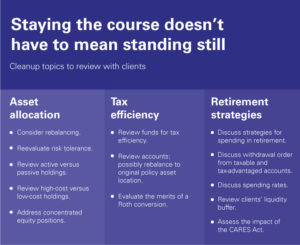“The only sensible person is my tailor. He measures me anew each time he sees me.” ~George Bernard Shaw
Author: Robert Eklund
Our lives here in the good ole USA are as varied as ice cream flavors nowadays. (Think Ben & Jerry’s Marshmallow Sky or the tried-and-true Cherry Garcia).
We all enjoy and prefer different hobbies, places to live, and professions. We love different people, drive different cars, and enjoy different vacations and recreations; this variety helps make life exciting!
Thank God we are different; this would be a pretty dull world and nowhere close to the innovative planet we live on today if we all enjoyed the same things. Some people love science, others love art, some like flying planes, while others love finance. And some crazies actually enjoy both!
The Case for Tailored Financial Plans
NEWS ALERT – We are not the same, and never will be! These variations and aspirational differences make us uniquely…us. These differences illustrate why our financial plans should be more than just one-size-fits-all carbon copies. Our plans should be specifically tailored to our ambitions, values, and life goals.
The term tailors use to describe a suit that fits precisely to your body and no one else’s is bespoke. We know there are all kinds of suits differing widely depending on the occasion, size of the individual, the expected weather, and the budget. Nevertheless, there are articles all suits should include, such as pants, a jacket, buttons, a tie, and shoes.
Similarly, our financial plans should be tailored to our circumstances, values, goals, income levels, time horizons, and risk tolerance. However, all competent, professional wealth management should include risk assessments, retirement planning, estate planning, education wishes, insurance needs, etc.
Ideally, everyone would have tailored clothing. However, for many people, a bespoke suit or financial plan is outside of their budget, and an off-the-rack suit or financial plan that fits their circumstances can put them on the right path to accumulating wealth. Once assets grow and circumstances become more complex, a bespoke financial plan may make more sense than the off-the-shelf answer.
Simple Plans for Simple Lives
Let us take a 23-year-old minimum-wage worker living paycheck to paycheck. Let’s call him “Rooster.” Rooster has ambition, is disciplined, and would like to retire at age 67. He wants to live a comfortable but not extravagant life in retirement. At this point, he does not have a family or much in the way of assets or complexity. His plan may look like this:
Step 1. Ensure Rooster has three-to-six months of living expenses in a high-yield savings account.
Step 2. Save 15-20% of every dollar earned in a Roth IRA.
Step 3. Put these dollars to work for Rooster in a low-cost target-date retirement fund for now.
Step 4. After Rooster begins to see the benefits and power of compounding, talk to a fiduciary advisor about how to invest those dollars more deliberately outside of a target date fund.
Step 5. Save for short-to-mid-term goals in a separate taxable brokerage account invested in a money market fund or short-term bond fund.
Complex Strategies for Complex Lives
Now, we will consider a 59-year-old airline captain. Let’s call him Captain Maverick. Now, Maverick is married to a younger bar owner who is 49 years old. You guessed it, her name is Penny.
They have one child they want to put through college and aging parents they will help care for. Maverick will retire at age 65, and Penny will retire at 55. They would like to continue their current lifestyle in retirement and aspire to travel the world. Penny wants a new Porsche 911 in retirement, and Maverick wants a new Kawasaki motorcycle and to fly his P-51 Mustang 10 hours a month.
Maverick is maxing out his airline’s 401k 2023 IRS 415(c) limit of $69,000 plus his $7,500 414(v) catch-up contributions (for folks 50 and older).
Luckily, Penny’s bar does well because of all the drunken sailors. Unfortunately, she feels frustrated because even though her income is significantly less than Maverick’s, her income pushes their joint income into a much higher marginal tax bracket. She wonders if she should even waste her time with the bar since (seemingly) a substantial part of her income is going to the tax man!
Fortunately, Penny learned that she could contribute up to $69,000 to her Solo or Individual 401k because she is a self-employed business owner. The 401k is especially beneficial since Penny can contribute a significant percentage of her self-employed income. Furthermore, she can contribute pre-tax or Roth, just like Maverick!
Additionally, they both max out their after-tax IRA contributions and convert them to Roth including catch-up contributions ($7,000 for Penny, $8,000 for Maverick). They also contribute $15,000 annually to their Schwab taxable brokerage accounts using tax-efficient exchange traded funds (ETF) which can nearly mimic tax-deferred growth if invested correctly.
Maverick’s airline also contributes to a Market-Based Cash Balance Plan for their pilots, approximately $16,100 per year, including 401k spillover. You might have guessed that Maverick has a Navy pension ($54,000 per year) and a military disability benefit of $12,000 per year.
Preparing for a Secure Future
Developing a retirement income plan would help them determine if they are on track and ensure they can prepare for unexpected life changes that come their way.
Furthermore, their plan would be stress tested for potential market declines and evaluate the sequence of return risks and mitigate said risk using the Three Bucket Retirement Income strategy.
Here are other beneficial strategies Maverick and Penny consider helping to simplify the complexity of their financial lives:
- College planning. What are the best places to save for Maverick (or Penny) Jr.’s education? What if Jr. Decides to skip college and attend a trade school or United’s Aviate program?
- Long-term care planning. What if one or both has the need for long-term care during their lifetime? How can they help their aging parents in this difficult area?
- Should they convert pre-tax dollars (401k) to Roth during retirement and before required minimum distributions begin?
- Tax-loss harvesting strategies may be implemented for their taxable brokerage accounts thus reducing the potential tax drag due to capital gains taxes.
- Utilize a risk-appropriate, diversified ETF approach to their portfolio to mitigate unseen risks to their investment strategy.
Perform a thorough audit of life, liability, and health insurance needs.
- A tax-efficient charitable plan could be developed to maximize their philanthropic contributions.
- Legacy planning would be thoroughly discussed to help stabilize and solidify not only their financial futures but the future of generations to come.
As you can see the Maverick-Penny Plan is significantly more complex than Rooster’s. Maverick and Penny are likely to have quite a bit of income in retirement and they do not want to risk making a big mistake with their future.
The Value of Personalized Financial Advice
A bespoke financial approach could add tremendous value to Penny and Maverick’s financial lives, reduce their stress, and increase their peace of mind!
If you made it this far and are still awake, I thank you. As you now know, I am a fiduciary and vow to protect my clients’ hard-earned money with the highest devotion to their goals.
If you want to chat further about your personal financial goals or any other subject, please give me a buzz at (719) 624-7055 or shoot me an email at robert@leadgingedgeplanning.com.
Until next time, I hope you have only tailwinds and blue skies!
Please let us know if we can help you on your journey to financial peace and prosperity! Click here to sign up for our newsletter or click here to schedule a time to chat about your circumstances in more detail. Also, check out our Pilot Money Guys podcast, where we regularly discuss these types of financial topics along with some fun airline news updates and interesting guest interviews—even the editor and founder of Aero Crew News – Craig Pieper
Please remember that past performance may not be indicative of future results. Different types of investments involve varying degrees of risk and there can be no assurance that the future performance of any specific investment, investment strategy, or product made reference to directly or indirectly in this video will be profitable, equal any corresponding indicated historical performance level(s), or be suitable for your portfolio. Moreover, you should not assume that any information or any corresponding discussions serves as the receipt of, or as a substitute for, personalized investment advice from Leading Edge Financial Planning personnel. The opinions expressed are those of Leading Edge Financial Planning and are subject to change at any time due to the changes in market or economic conditions.
















